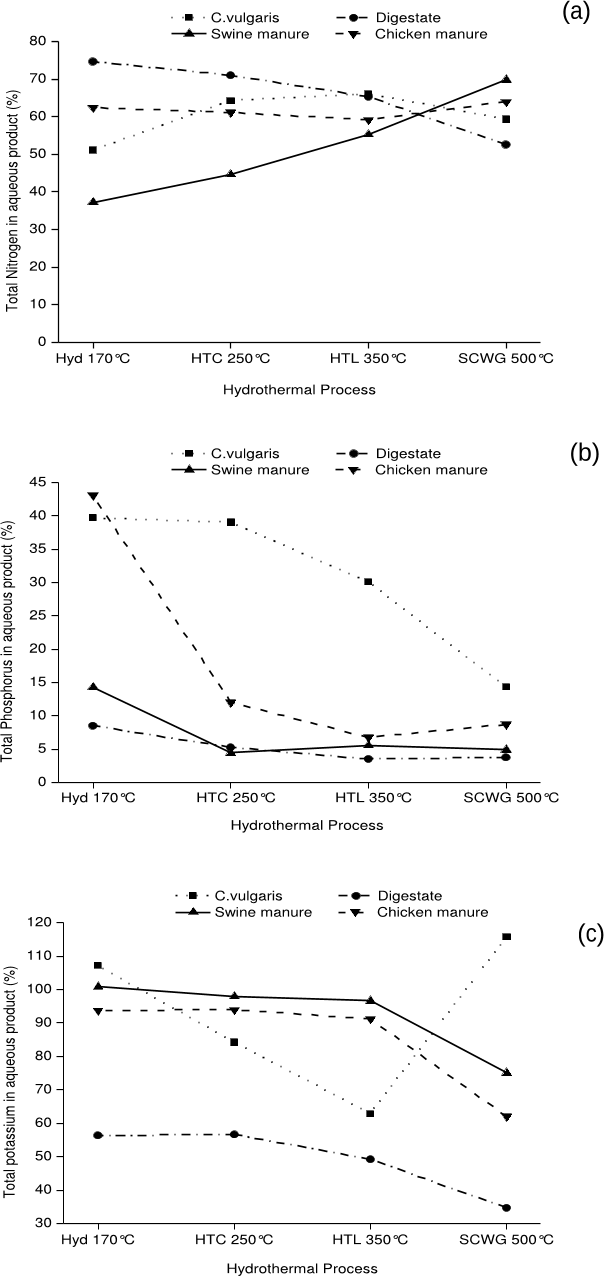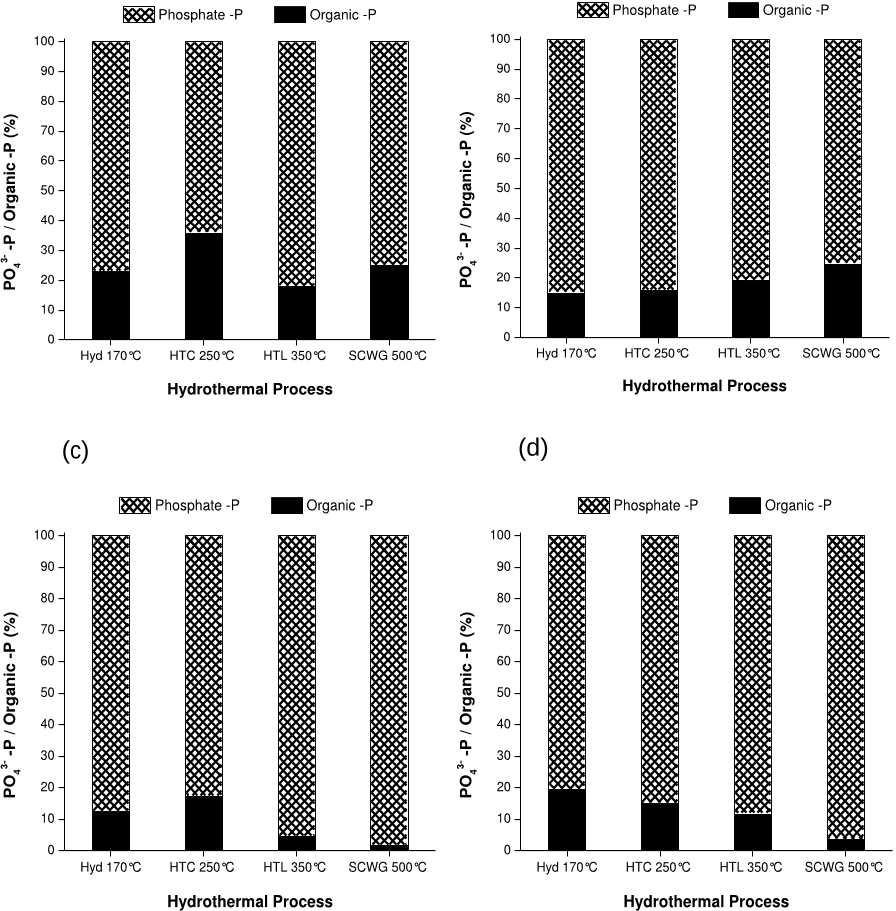Abstract: Projected shortages of global phosphate have prompted investigation of methods that could be employed to capture and recycle phosphate, rather than continue to allow the resource to be essentially irreversibly lost through dilution in surface waters. Hydrothermal carbonization of animal manures from large farms was investigated as a scenario for the reclamation of phosphate for agricultural use and mitigation of the negative environmental impact of phosphate pollution. Hydrothermal reaction conditions were identified for poultry, swine, and cattle manures that resulted in hydrochar yields of 50–60% for all three manures, and >90% of the total phosphorus present in these systems was contained in the hydrochars as precipitated phosphate salts. Phosphate recovery was achieved in yields of 80–90% by subsequent acid treatment of the hydrochars, addition of base to acid extracts to achieve a pH of 9, and filtration of principally calcium phosphate. Phosphate recovery was achieved in yields of 81−87% based on st...








